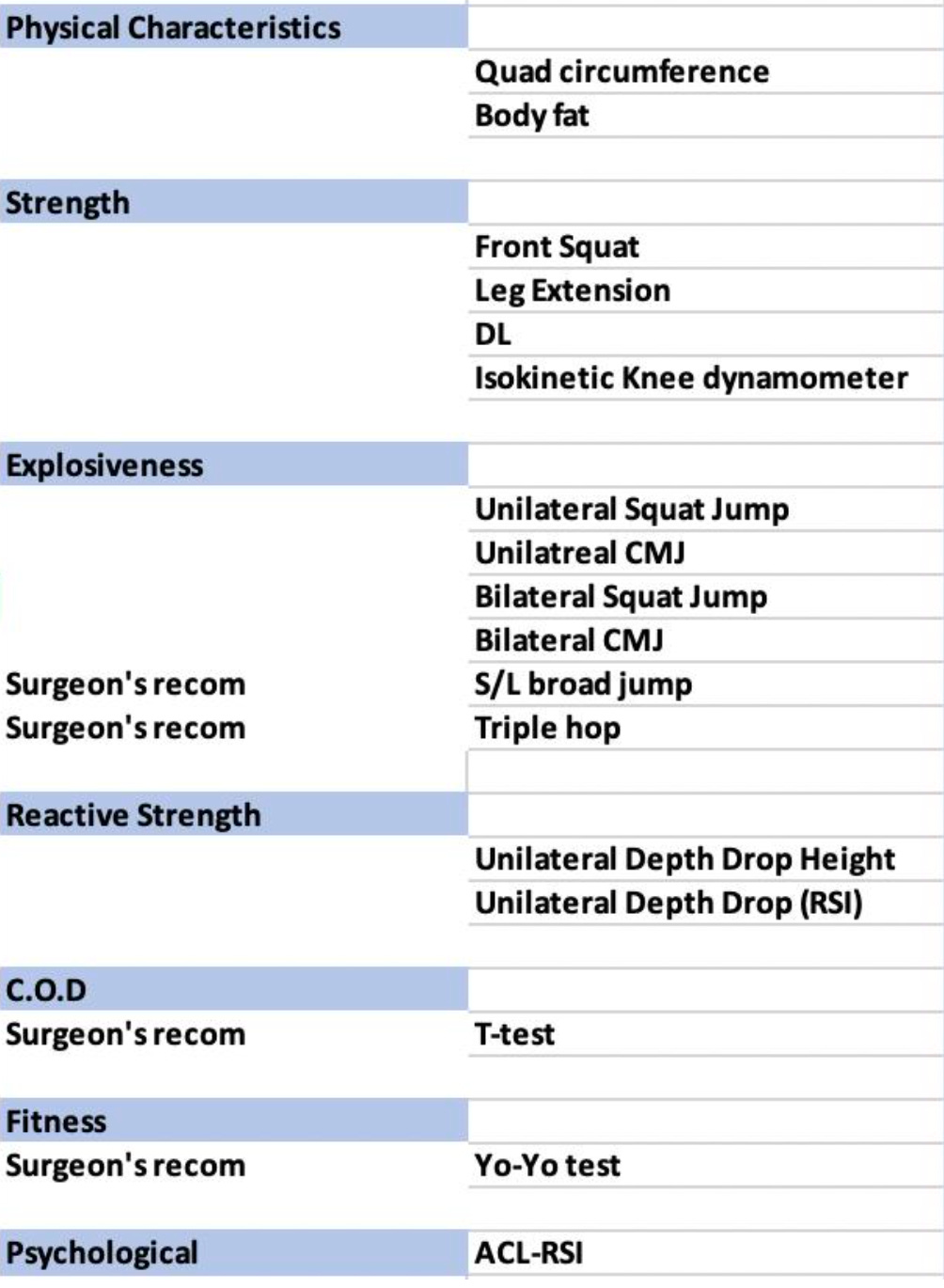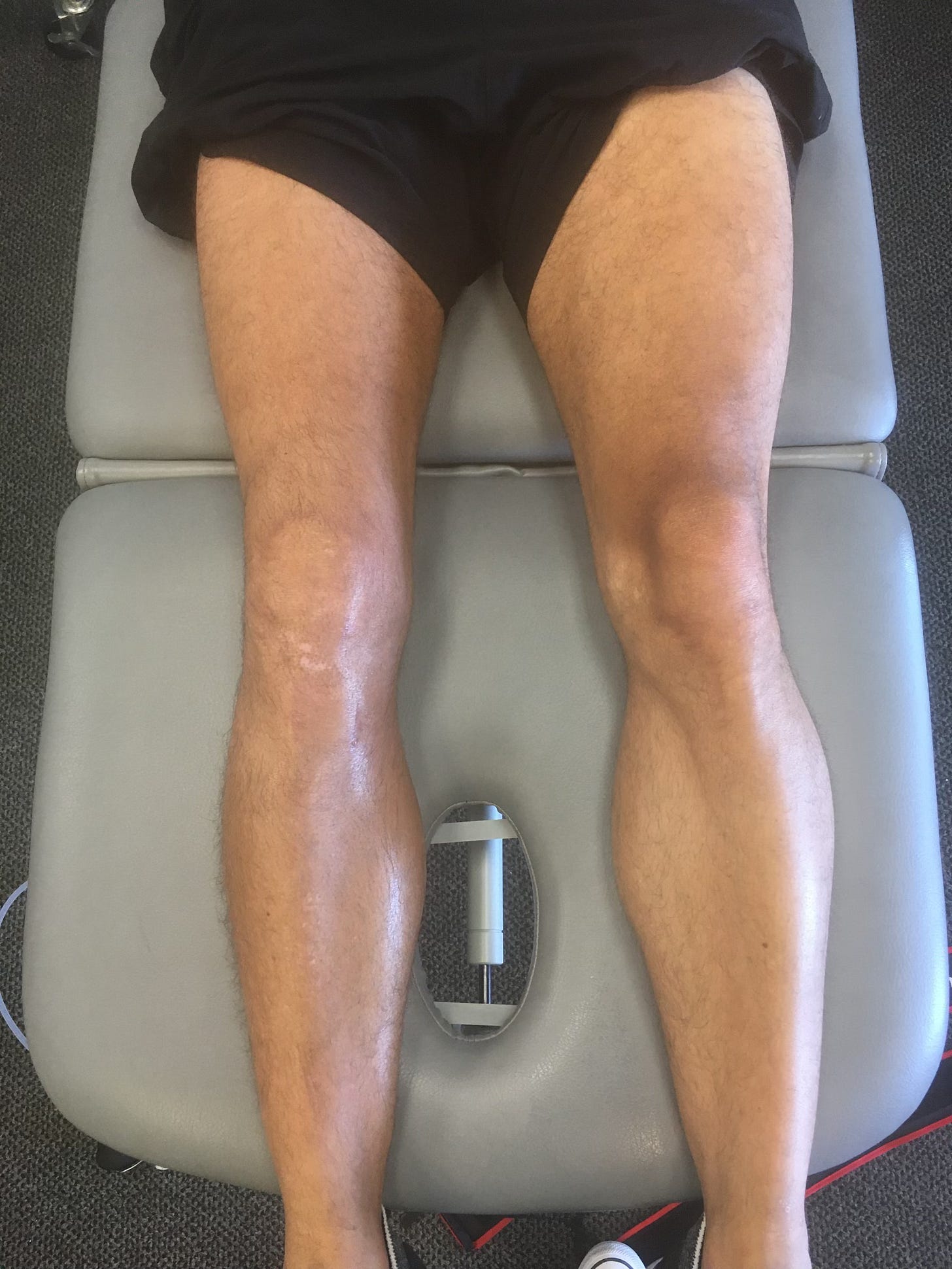ACL-reconstruction & RTP.
How do you determine if someone is ready to return to play after an ACL injury?
There is no one best way to determine this, at least I believe. I definitely don’t have all the answers, though. I feel, if practitioners clear them based on the best resources and information they have available to them, they are doing their job.
With that being said, I think you need to be as objective as you can. If you have technology to help you, that is great. If you don’t, well you can still make it work – for example.
With an ACL-reconstruction, you may not have access to a Biodex or any other technology.
While maybe not as indicative of RTP readiness, things such as quad circumference with a tape measure to see if they are symmetrical side to side is an easy and cheap KPI to have in a RTP framework. Time of course is a consideration, but if we are purely just going off of time, that isn’t good enough in my opinion. We do know that delaying RTP to an extent plays a nice role: Grindem et al. (2016) reported that re-injury rates were significantly reduced by 51% for each month RTS was delayed until 9 months after surgery, after which no further risk reduction was observed.
I think you need the time (9+ months [more like a year]) and the individuals clearing your RTS criteria etc.
Also, we know horizontal hop tests might not be indicative of knee function compared to vertical hop tests (Kotsifaki et al. 2022), but you could measure horizontal jumps with the same tape measure. At least it is something to track trends and go off of. Further, psychological readiness is a huge aspect which I feel can be easily implemented by sending your athlete something like this link, which is free and you can download results etc. What gets measured, gets managed.

-
An article that is probably worth your time:
https://www.sportsmith.co/articles/essential-guide-to-testing-and-profiling-an-athlete-during-rehabilitation-and-return-to-play-after-aclr/?index=1
-
I hope you enjoyed this and would appreciate your feedback!


